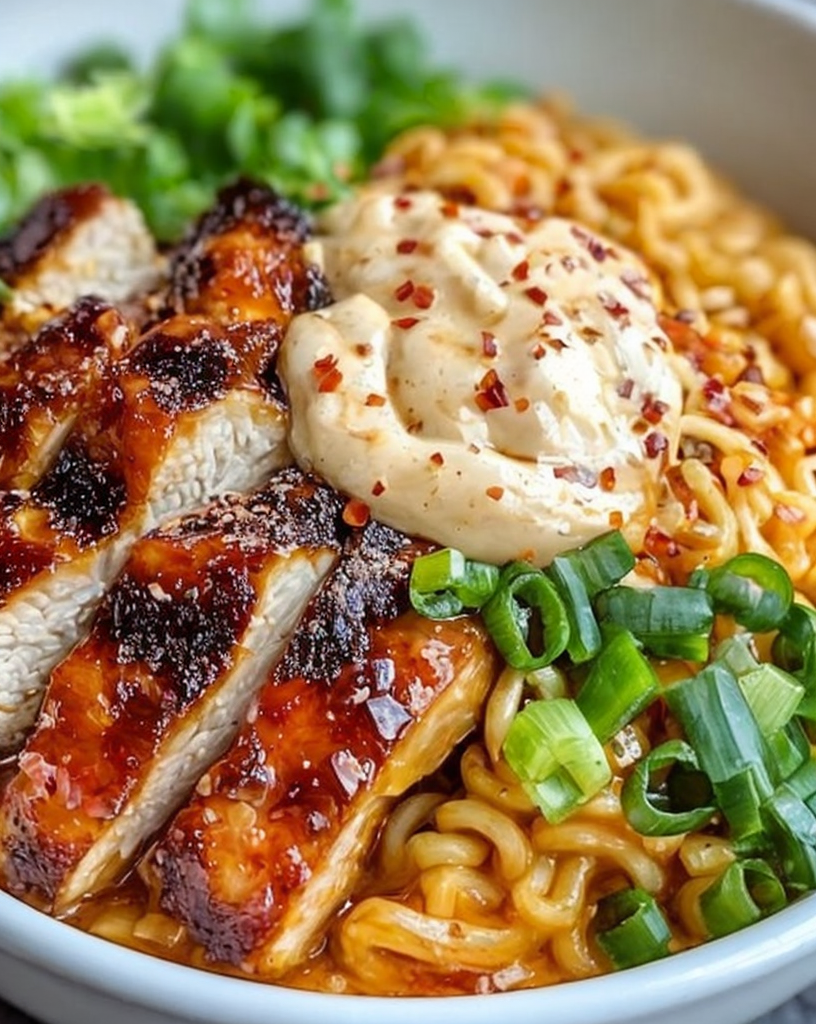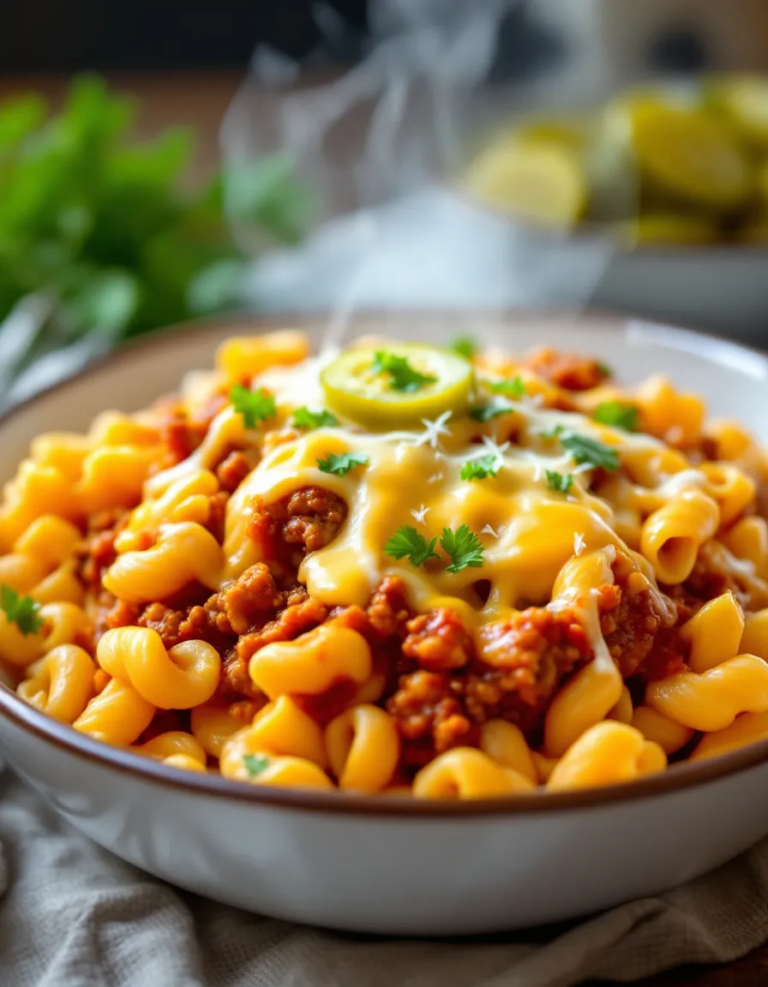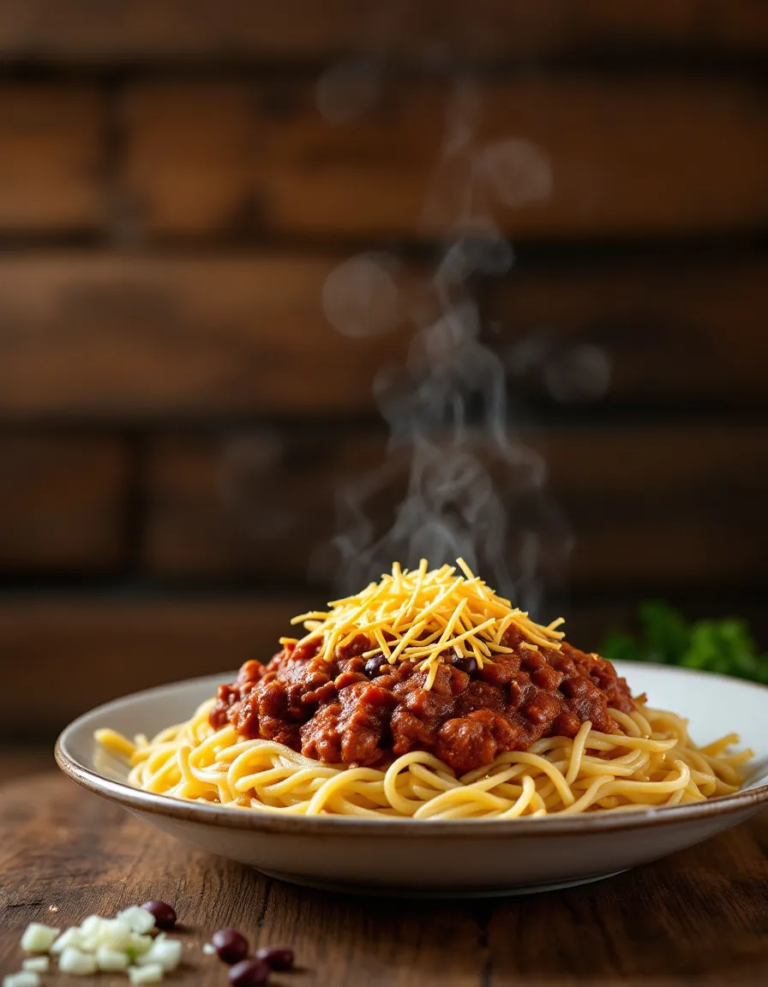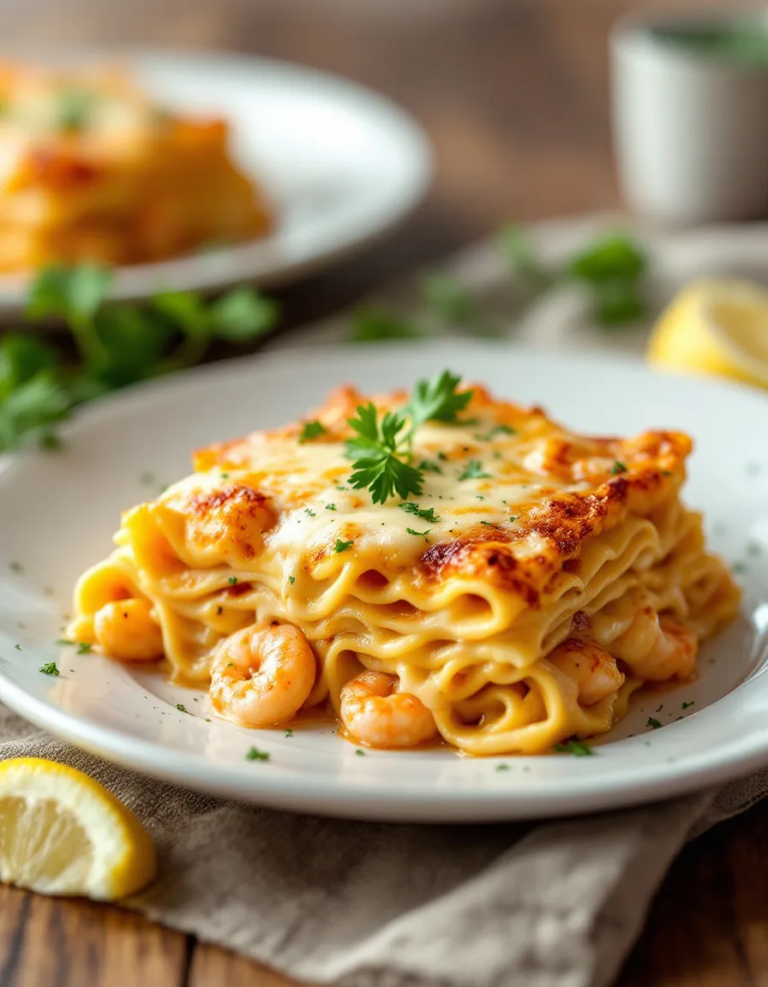Ultimate Spicy Chicken Ramen Bowl Ready in 30 Minutes
Spicy Chicken Ramen Bowl with Creamy Sauce: A Flavor Explosion in Every Bite
Experience a symphony of flavors with this Spicy Chicken Ramen Bowl with Creamy Sauce. Imagine the savory aroma of succulent chicken infused with bold spices, swirling through your kitchen as the dish comes together. Topped with a rich, creamy sauce that balances the heat, this ramen bowl not only satisfies your cravings but warms your soul. At the core of this bowl lies a perfect blend of tender chicken, fresh vegetables, and al dente noodles that make it irresistible.
This recipe invites you to enjoy a combination of warming spices coupled with a luscious sauce, creating a comforting meal that’s perfect for both busy weeknights and special occasions. Each bite is a whirlwind of taste—a touch of spice, creaminess, and crunch from the vegetables. Whether you’re treating yourself or hosting friends, this Spicy Chicken Ramen Bowl delivers satisfaction, comfort, and a hint of adventure.
Quick Recipe Highlights
- Flavor Profile: Expect a vibrant punch from the spices, complemented by the creaminess of the sauce that rounds out the heat effortlessly.
- Texture: Each bowl offers a delightful contrast—the tender chicken and chewy noodles alongside crunchy greens.
- Aroma: The enticing scent of garlic and ginger lingers, promising a flavor experience you won’t forget.
- Visual Appeal: A colorful display of bright vegetables, golden chicken, and a creamy drizzle make this dish a feast for the eyes.
- Skill Level Needed: While this recipe requires some chopping and sautéing, the techniques are straightforward, making it accessible to intermediate cooks.
- Special Equipment: A large pot for the ramen and a frying pan for the chicken will be your primary tools.
Recipe Overview
- Difficulty Level: This recipe is classified as intermediate due to the timing of multiple components coming together, but it is manageable with some kitchen experience.
- Category: Perfect for lunch or dinner, this dish combines protein, noodles, and vegetables into a single, fulfilling meal.
- Cuisine: Rooted in Japanese culinary tradition, this ramen incorporates spicy elements that align with modern fusion cuisine.
- Cost: Budget-friendly meal with ingredients generally costing under $20, making it both accessible and delicious.
- Season: Ideal for all seasons, the warmth from the spices makes it especially satisfying in colder months.
- Occasion: Great for weeknight dinners, casual gatherings, or impressing guests during a cozy dinner party.
Why You’ll Love This Recipe
The combination of spicy chicken and creamy sauce will tantalize your taste buds, delivering a bold flavor experience that’s hard to resist. It’s a balance of rich, zesty flavors and comforting textures that turns an ordinary meal into something extraordinary. Plus, the way the heat from the spices melds with the creamy components leaves a delightful lingering taste that keeps you coming back for more.
This ramen bowl brings convenience without sacrificing quality. With quick prep and cooking times, it’s perfect for those who want a satisfying meal without spending hours in the kitchen. Everything comes together beautifully in under 40 minutes, making it a reliable weeknight dinner option.
Healthy eating can often seem daunting, but this dish is rich in nutritional benefits. The chicken provides a great source of protein, while the colorful vegetables contribute essential vitamins and minerals. Additionally, the versatility of the ingredients allows you to use what you have on hand, promoting healthy, mindful cooking.
Socially, this dish is perfect for sharing. The vibrant presentation coupled with unique flavors is sure to spark conversation and compliments, making it an entertaining choice for gatherings. It’s not just a meal; it’s a shared experience around the dinner table.
Finally, the affordability of this meal cannot be overlooked. With minimal ingredients and simple techniques, you can create a restaurant-quality dish at a fraction of the cost. This makes it not only a rewarding dish to prepare but also an accessible option for individuals or families looking to enjoy gourmet flavors on a budget.
Historical Background and Cultural Significance
The origins of ramen can be traced back to China in the late 19th century, but it has since evolved into one of Japan’s most loved and recognized dishes. It reflects a blend of cultural influences and culinary techniques that have developed over decades, with spicy adaptations emerging in contemporary cuisine.
In Japan, ramen is more than just food; it’s a cultural phenomenon. With countless varieties across different regions, each bowl tells its own story, influenced by local ingredients, traditions, and tastes. The spicy chicken ramen bowl that we feature is a nod to these evolving tastes, merging traditional broth with a kick of contemporary heat.
Over time, ramen has undergone significant transformation, adapting to global flavors and trends. With its rapid rise in popularity worldwide, variations like this spicy chicken version show the versatility of ramen in accommodating diverse palates while maintaining its comforting essence.
Certain regions claim their own unique interpretations, often leveraging local spices and ingredients, which makes ramen a dish that promotes creativity and culinary exploration. This also allows home cooks to infuse their own personal touches, further diversifying the rich tapestry of ramen dishes worldwide.
Ingredient Deep Dive
Chicken: Chicken is a staple meat that adds protein and rich flavor. It is essential in various cuisines due to its versatility and ability to absorb spices well. The selection of fresh, high-quality chicken contributes to the overall taste. For optimal storage, keep it in the refrigerator wrapped tightly or in a sealed container for up to two days. If you’re looking for alternatives, turkey or tofu are great substitutes for a leaner or vegetarian version.
Ramen Noodles: Ramen noodles are made from wheat flour, salt, water, and an alkaline mineral. These noodles provide the chewy texture that is characteristic of ramen. When selecting noodles, look for fresh or high-quality dried options that are easy to prepare. Store them in a cool, dry place, and they can last several months. For a gluten-free option, consider rice noodles or zucchini noodles as a creative alternative.
Vegetables: Fresh vegetables like bok choy, carrots, and scallions add essential nutrients and vibrant colors to your dish. Not only do they enhance the flavors, but they also provide dietary fiber and vitamins. Choose vegetables that are in season for the best flavor and freshness. Store them in the refrigerator and consume within a week. If you’re out of a specific vegetable, many others can serve as delightful substitutes—think snap peas, cabbage, or bell peppers.
Spices: The spices used in this recipe, such as chili paste and ginger, elevate the dish with heat and depth. Spices have important cultural significance, often used in various forms to enhance flavors and provide health benefits. Fresh spices are recommended for the best flavor, but ground versions can be stored for longer periods in an airtight container. For adjustments, use other chili varieties or sauces depending on your heat preference.
Creamy Sauce: The creamy sauce made with tahini or peanut butter creates a luscious backdrop for the spicy elements. This ingredient provides healthy fats and a rich texture that contrasts well with the noodles and chicken. Aim for high-quality nut butters or tahini to enhance flavor. Store your creamy ingredient in the refrigerator after opening, and it can last for several months. You can also create vegan versions using avocado or cashew cream for a different flavor profile.
Common Mistakes to Avoid
- Overcooking the Chicken: Too long in the skillet will dry out the chicken. Ensure it’s just cooked through, remaining juicy and tender.
- Using Stale Noodles: Fresh noodles offer the best texture. Stale or expired noodles can ruin your dish’s overall quality.
- Neglecting to Season Properly: The broth should not just be water; adding salt and umami is crucial for depth of flavor.
- Skipping Vegetable Prep: Properly chopping vegetables not only affects the aesthetics but also their cooking time and texture.
- Rushing the Sauce: Allowing time for the sauce to meld the flavors enhances the dish. Don’t skip this step!
- Ignoring Ingredients’ Temperature: Ensuring all ingredients are at room temperature before cooking helps them combine better.
- Too Many Ingredients: Keep your bowls balanced—too many toppings can overwhelm the base flavors of the ramen.
- Using Cold Broth: If using pre-made stock, warm it before adding to the noodles; helping to achieve the ideal serving temperature.
- Not Tasting as You Go: Continuous tasting while cooking is key to adjusting seasoning and ensuring balance in flavors.
- Omitting Garnishes: Fresh herbs and toppings add a lot to the visual appeal and taste. Don’t skip them!
Essential Techniques
Sautéing: Sautéing is a fast cooking method that helps to sear meats and enhance flavors. To master sautéing, use a high heat and keep ingredients moving in the pan to avoid burning. Look for visual cues like achieved browning on chicken and softened vegetables.
Cooking Ramen: Properly cooking ramen is crucial to achieving the perfect texture. Follow package instructions for timing and keep water at a rolling boil for the best results. Familiarize yourself with the noodle’s firmness to ensure you achieve the desired doneness.
Making the Sauce: Balancing flavors when preparing the sauce is essential. Use a whisk or blender for a smooth consistency and ensure ingredients can blend easily. Taste as you go to adjust texture and flavor to your preference.
Combining Ingredients: Combining different elements of the dish requires coordination. Layer your flavors wisely, starting with the noodles, then adding the chicken, followed by veggies, and finally dressing the dish with the sauce.
Pro Tips for Perfect Spicy Chicken Ramen Bowl
– Always use high-quality ramen noodles; they make a significant difference in the final dish.
– Adjust the spice levels according to your taste. If you love heat, don’t be shy to add extra chili paste!
– Use a combination of fresh herbs like cilantro or green onion for added freshness and presentation.
– To prevent the noodles from sticking, toss them in a little oil immediately after cooking.
– Marinate the chicken for at least 30 minutes for enhanced flavor—this makes a huge difference.
– Keep your broth simmering while you prepare the other ingredients; it improves the depth of flavor.
– Investing in a good-quality stock enhances every soup-based dish, including ramen.
– Don’t rush the creamy sauce; let it meld for at least 10 minutes before serving to develop its flavors.
Variations and Adaptations
This dish can be easily adapted to incorporate regional variations. For a Thai twist, add coconut milk to the creamy sauce and incorporate fresh basil or cilantro. If you’re craving something sweeter, drizzle a bit of hoisin sauce over the ramen before serving.
Seasonal adaptations include using autumn squash or root vegetables in the winter months, providing a different texture and freshness. For dietary modifications, simply replace chicken with tofu or seitan for a fulfilling vegan option without compromising flavor.
Experimenting with flavors can introduce fun twists—try adding different hot sauces or using a curry paste for a unique spin. Additionally, playing with textures by adding crunchy fried garlic or shallots can elevate the bowl’s overall appeal.
For presentation purposes, use vibrant plateware that highlights the rich colors of your ramen, or serve it in traditional Japanese bowls for authenticity, enhancing the dining experience.
Serving and Presentation Guide
Plating is key in making your Spicy Chicken Ramen Bowl visually appealing. Start with a base of noodles layered neatly in the bowl. Add the chicken on one side, followed by vegetables on the other, creating a pleasing mix of colors and textures.
Incorporate garnishes like sliced chilies or herbs on top for a pop of color. Consider serving it with a side of chili oil for those who want additional heat. Traditional accompaniments like pickled ginger can also provide a delightful contrast in flavors.
Temperature is essential; serve immediately after preparation for the best experience. If you are unsure about portion control, a standard serving of noodles is about 80-100 grams per person, which helps you maintain balance in dishes when serving at a gathering.
Wine and Beverage Pairing
Pairing wine with ramen can enhance the dining experience. A chilled Riesling works well with the heat from the dish, offering a refreshing contrast. Another excellent choice is a fruity Pinot Noir that complements the spices without overpowering them.
For non-alcoholic options, serve with cucumber or mint-infused water that helps cleanse the palate between bites. If a caffeine boost is desired, a light green tea complements the umami flavors. Always ensure beverages are served chilled to maintain their refreshing qualities alongside spicy dishes.
Storage and Shelf Life
If you have leftovers, store them in an airtight container in the fridge for 3-4 days. Make sure to separate the noodles from the ingredients to prevent sogginess. For longer preservation, consider freezing portions for up to 3 months, though the texture may slightly decline.
Always check for signs of spoilage before consuming leftovers—sour smells, discoloration, or dry-out indicate it’s time to toss. When reheating, adding a splash of broth or water can help revive the flavors and texture of the ramen, mimicking that fresh-made taste.
Make Ahead Strategies
Preparation can be streamlined by marinating chicken a day ahead and prepping vegetables to save time on cooking day. Store chopped or grated vegetables in airtight bags in the refrigerator to maintain freshness.
You can also pre-make the creamy sauce and keep it in the fridge for a quick whip-up when you’re ready to cook. Noodles can be cooked a day in advance, but remember to toss them with a little oil to prevent sticking.
When reheating, assure you’re only combining freshly cooked ingredients with prepared elements, preserving the original taste and texture. Adding fresh herbs and garnishes right before serving also enhances the dish’s vibrance.
Scaling Instructions
If you want to halve the recipe, simply divide the ingredients by two, adjusting water and spice as necessary for flavor balance. When doubling or tripling, ensure your cooking pot is large enough to accommodate the increased quantities without overcrowding.
Timing may require adjustments, as larger quantities can take longer to cook. Monitor the chicken’s doneness and noodle texture carefully to avoid overcooking. Particularly with broths, keep tasting as you scale, ensuring seasoning remains balanced.
Finally, remember to adjust your storage containers for scaling; ensure they are appropriately sized to avoid spills when storing larger batches.
Nutritional Deep Dive
A serving of this Spicy Chicken Ramen Bowl delivers a healthy balance of macronutrients—providing protein from the chicken, carbohydrates from the noodles, and healthy fats from the creamy sauce.
Micronutrient-wise, vegetables add vitamins A and C, along with fiber which aids digestion. When prepared with appropriate portions, this meal can align well with dietary recommendations, offering a satisfying dish without overloading on calories.
For those managing diets, being aware of portion size is crucial; each serving contributes to a balanced caloric intake while still delivering flavor. Offering modifications to reduce carbs or fats can easily be achieved by using zucchini noodles or reducing the quantity of the creamy sauce.
Dietary Adaptations
If you’re looking for gluten-free options, using rice noodles in place of traditional ramen is a delicious alternative that maintains a similar texture. For a dairy-free version, a cashew or almond-based sauce can serve as an excellent substitute.
Vegetarians can replace chicken with mushrooms or tofu, maintaining protein levels while enhancing flavor complexity. For keto-friendly versions, consider shirataki noodles as a low-carb alternative, providing a unique texture alongside the spicy and creamy ingredients.
Paleo dieters can seek sweet potato noodles while avoiding conventional ramen altogether, substituting certain ingredients while keeping flavors and richness intact. Each dietary adaptation opens up new possibilities for enjoying this delightful recipe.
The Recipe
Spicy Chicken Ramen Bowl
Serves: 4
Prep Time: 15 mins
Cook Time: 25 mins
Total Time: 40 mins
Kitchen Equipment Needed
- Large Pot
- Skillet
- Whisk
- Chopping Board
- Sharp Knife
- Measuring Cups and Spoons
Ingredients
- 400 grams of chicken breast, sliced
- 4 servings of ramen noodles
- 2 cups of bok choy, chopped
- 1 cup of carrots, julienned
- 3 garlic cloves, minced
- 1 tablespoon of ginger, grated
- 2 tablespoons of chili paste
- 3 tablespoons of soy sauce
- 3 tablespoons of tahini or peanut butter
- Green onions for garnish
- Salt and pepper to taste
- Chili oil for drizzling (optional)
Directions
- In a large pot, bring water to a boil and cook ramen noodles according to package instructions. Drain and set aside.
- In a skillet, heat a tablespoon of oil over medium heat. Add sliced chicken, season with salt and pepper, and cook until browned and fully cooked through, about 5-7 minutes.
- Add minced garlic, grated ginger, and chili paste to the skillet, sautéing for another 2-3 minutes until fragrant.
- In a small bowl, whisk together soy sauce and tahini (or peanut butter) until well blended.
- Add bok choy and carrots to the skillet, mixing well until they just start to soften.
- Combine the cooked noodles with the chicken and vegetables, stirring in the creamy sauce until evenly coated.
- Serve hot, garnishing with green onions and a drizzle of chili oil if desired.
Recipe Notes
- Feel free to substitute chicken with tofu or mushrooms for a vegetarian option.
- Adjust the spice level by increasing or decreasing the chili paste to your preference.
- For a gluten-free version, use rice noodles and gluten-free soy sauce.
Troubleshooting Guide
For texture issues, ensure noodles are not overcooked by timing them precisely as per instructions. If your dish is lacking balance, adjusting salt and acidity can often remedy bland flavors. For temperature problems, ensure your broth is hot and avoid mixing cold ingredients.
If you face ingredient challenges such as unavailable spices, consider substitutes that can offer similar heat or flavor. Timing concerns can arise during busy preparations; pre-cook proteins and veggies to streamline your cooking process for later dinners.
Recipe Success Stories
Community feedback has been overwhelmingly positive, with many praising the depth of flavor delivered by the creamy sauce alongside the broth. Several readers have successfully adapted the recipe for dietary preferences, sharing stories about surprising family members who thought they wouldn’t love a spicy dish.
Those who have taken the plunge into experimental variations often endore the results, sharing tips to empower cooks to personalize their ramen bowls based on what’s on hand seasons. For anyone worried about the preparation, photography success tips abound, navigating how to showcase the colorful components beautifully.
Frequently Asked Questions
Can I make this ramen vegetarian? Absolutely! Just swap the chicken for tofu or tempeh and use vegetable broth instead of chicken broth. This way, you can preserve flavor while adhering to your dietary needs.
How can I reduce the spiciness? To mellow the heat, you can reduce the amount of chili paste and increase the creamy sauce to balance it out. Adding more tahini or peanut butter works wonderfully.
What’s the best way to store leftovers? Store any leftovers in an airtight container in the fridge for up to 4 days. Keep noodles separate from the broth to maintain texture, and reheat over low heat.
Can I freeze the ramen? While not optimal, you can freeze the ingredients without the noodles. The sauce and chicken freeze well, whereas noodles should be freshly cooked for the best texture.
What’s a good substitute for tahini? Peanut butter can be used instead of tahini, or you could try almond butter or cashew butter for a different flavor profile.
How spicy is this ramen? The spice level can be adjusted based on your preference; the recipe provides a moderate heat, but feel free to add more chili paste or fresh chilies if desired.
Can I use instant ramen noodles? Yes, you can use instant ramen noodles, but adjust cooking times accordingly and focus on enhancing your broth and sauce to elevate the overall dish.
What vegetables can I include? Feel free to include any seasonal vegetables such as bell peppers, zucchini, or snap peas—these can add different flavors and nutrients to your bowl.
Is this recipe gluten-free? It can be made gluten-free by choosing rice noodles and gluten-free soy sauce, ensuring all components adhere to gluten-free standards.
Can this be prepared ahead of time? Yes! You can prep ingredients ahead, marinate chicken, and make the sauce in advance to streamline cooking when you’re ready to eat.
Additional Resources
If you’re interested in exploring similar recipes, check out dishes like miso ramen or tonkotsu ramen for a variety of broth flavors. Additionally, these guides on noodle techniques can help elevate your ramen making skills.
Consider investing in quality kitchen equipment, such as a good chef’s knife and a sturdy pot for broth preparation. Exploring seasonal variations can inspire you to adapt the ramen bowl according to what’s locally available and fresh.
Join the Conversation
We invite you to share your experience with this Spicy Chicken Ramen Bowl. Share your photography and insights on social media, and engage with other food enthusiasts. Recipe reviews and suggestions enrich our community, revealing various adaptations and personal twists to this delightful dish.
Feel free to collaborate on ingredient variations, bustling culinary creativity within our vibrant cooking family. We encourage sharing your journey in making this delectable dish and how it has spiced up your meal preparations!







